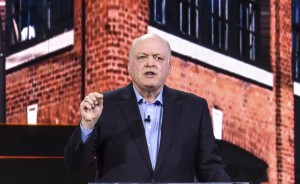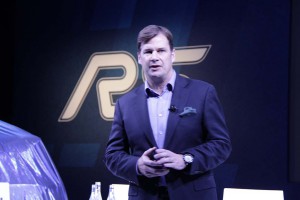
Jim Hackett, president and chief executive officer, Ford Motor Co., suggested the automaker wasn't going through a restructuring, but instead a redesign.
Ford Motor Co. executives during a conference with analysts promised more details of the company’s restructuring plan, but Ford CEO Jim Hackett also said it will not have the same kind of thrust as traditional restructuring with firing and plant closings.
“It’s not a restructuring plan, it’s a redesign plan,” Hackett told analysts. “First, we have to identify the areas that need to be fixed then we have figure out how to fix them and then execute,” he added. Ford officials said last year that they expected to trim $11 billion from the company’s operating cost, though they offered few specifics, irritating analysts, who wanted more details.
“I think some elements wouldn’t take the full five years,” he said. Some are going to take longer,” he said.
“We’re in better competitive position than we were only a year ago,” added Hackett, noting that the company has developed alliances with Volkswagen, Mahindra and Avis, which plans to feed 35,000 Ford-made commercial vehicles to customers through its phone app.
(Losing money, Ford shakes up struggling Chinese operations, appoints new CEO. Click Here for the story.)
“We’re going to offer our dealers a portfolio of powertrains. We’re increasing capitalization for electrification,” he said.
In addition, the company is launching several new products in North America, Europe and China, among them the 2019 Ford Edge, Ford Edge ST and Ford Ranger, the new Ford Focus and Ford Territory in China.

Ford's Jim Farley said the company expected a reversal of fortune in China with new products and a new leader.
Jim Farley, Ford executive vice president, said the new product will help ignite a turnaround in the company’s lackluster performance in China.
“We’re in really good shape for the launch of these new products. We have tremendous opportunity to drive better margins in China. Our turnaround in China is really up to us. It’s about our new products and our costs. The opportunity is in our control,” said Farley, adding the recent decline in industry sales in China followed the withdrawal of government incentives.
The company didn’t stop there, replacing Ford China boss Jason Luo with former Chery Automotive chief Chen Anning, who previously spent 17 years at Ford.
Farley also said it does not appear that Chinese customers are abandoning American brands because of the trade war between the U.S. and China. “We have not seen any sentiment change at the consumer level,” he said. But Ford plans to accelerate its effort to “localize” Lincoln production in China to offset the punitive tariffs currently in place.
(Click Here to check out Ford’s new midsize Chinese SUV, the Territory.)
Ford’s overseas operations represented a major challenge for the automaker as its operations in South America, Europe and Asia Pacific all lost money.
Outside of North America the company had a $558 million EBIT loss, slightly improved from the second quarter, despite lower volume. Ford’s EBIT loss in South America totaled $152 million, compared with a $2 million in the third quarter of 2017. In Europe the EBIT loss totaled $245 million, compared with $192 million in the same period in 2017. in Asia Pacific, Ford’s losses narrowed as the company posted a loss of $208 million, compared with $522 million in 2017.
At the same time, Ford has posted healthy margins in North America that promise to improve in the future. even though the company is also facing stiff headwinds that have added $1.6 billion to the company’s costs, added Ford CFO Bob Shanks.
Ford’s earnings before interest and taxes was driven by the North America business, with nearly $2 billion of EBIT, an improvement of $136 million year over year, despite lower volume and the higher commodity costs, supported by a share increase for the F-Series, record transaction pricing for Super Duty and higher sales of SUVs.
Overall, even though the company’s revenue increased by 3% during the third quarter, Ford Motor Co.’s income dropped by 40% during the third quarter to $1 billion, compared to $1.6 billion in the third quarter of 2017.
“This quarter shows that our business remains very strong in key areas. We continue to make progress on our efforts to redesign Ford to be far more competitively fit, disciplined in capital allocations and nimble enough to win in a fast-changing world,” Hackett said.
(To see more about Ford’s third-quarter earnings, Click Here.)
“With products like the Edge ST and Ranger launching in the United States and the Territory SUV in China, we are also building momentum shifting our product portfolio to build on our strengths and meet shifting consumer demand,” Hackett said.

